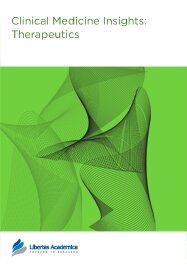

Publication Date: 15 May 2009
Type: Review
Journal: Clinical Medicine Insights: Therapeutics
Citation: Clinical Medicine: Therapeutics 2009:1 433-458

Gary J. Noel
Johnson & Johnson Pharmaceutical Research and Development, LLC, Raritan, NJ, USA.
Abstract
Completing its initial phases of drug development in the mid 1990s as the one of the first fluoroquinolones that could be used with confidence to treat respiratory tract infections, levofloxacin went on to become one of the most widely prescribed antibiotics in the world. Available in both oral (po) and intravenous (IV) formulations and with characteristics of over 90% bioavailability, distribution into both extracellular and intracellular pulmonary compartments, highly predictable pharmacokinetics with over 90% of the drug being excreted unchanged in urine, and reliable activity against a broad spectrum of clinically important pathogens, levofloxacin has been used successfully to treat patients with a variety of serious infectious diseases as well as common infections most often treated outside of the hospital setting. Results of clinical trials involving patients with respiratory tract, urinary tract, and skin infections have consistently shown rates of clinical success and bacteriological eradication that were comparable to other widely used broad-spectrum agents. Regimens of levofloxacin, initially involving total daily doses of 250 mg to 500 mg, but more recently regimens involving 750 mg doses, have been shown to be safe and effective. Nearly a decade and a half of clinical experience has defined a safety and tolerability profile that permits data-driven assessment of the risks and benefits of using levofloxacin. As resistance to currently available fluoroquinolones has emerged, the clinical value of levofloxacin deserves continued evaluation. However, consistently high rates of susceptibility of clinically important bacteria, especially among those bacteria that commonly cause respiratory tract infections, such as Streptococcus pneumoniae and Haemophilus influenzae, suggest that this agent will continue to be a widely used well past the 20-year anniversary of its introduction into the antibacterial armamentarium.
PDF (413.41 KB PDF FORMAT)
RIS citation (ENDNOTE, REFERENCE MANAGER, PROCITE, REFWORKS)
BibTex citation (BIBDESK, LATEX)


Working with the editorial staff and reviewers for Clinical Medicine Insights: Therapeutics was a positive experience. The online submission/revision process was easy and staff were readily available to answer any questions. Reviewers were knowledgeable, lending expert comments that allowed for improvement in content information. I highly recommend others practitioners and researchers to consider Libertas Academica journals for their next publication.

All authors are surveyed after their articles are published. Authors are asked to rate their experience in a variety of areas, and their responses help us to monitor our performance. Presented here are their responses in some key areas. No 'poor' or 'very poor' responses were received; these are represented in the 'other' category.See Our Results
Copyright © 2013 Libertas Academica Ltd (except open access articles and accompanying metadata and supplementary files.)
Facebook Google+ Twitter
Pinterest Tumblr YouTube